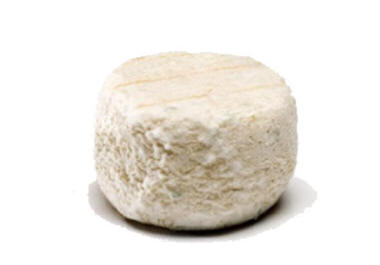
![]() Strong cheese of the inhabitant
Strong cheese of the inhabitant
of Lyon
"Pétafine"
|
|
Have a rough time with about slices of bread of campaign(countryside) and a green salad in the walnut oil.
|
|
|
![]() In glasses, a white mâcon (Vine Chardonnay)
In glasses, a white mâcon (Vine Chardonnay)
Ingredients for 6 dinner guests
-
500 G of goat cheese - very dry chavignol for example
-
250 G of blue cheese - of Auvergne for example
-
50 G of butter
-
20 Cl de Mâcon white - white wine (Chardonnay)
-
20 Cl of broth of leeks
-
10 Cl of marc of Burgundy
Indications of preparation
-
Grate 2 cheeses. Mix these cheeses by adding the soft butter.
-
Place the whole in a small terrine in earth(ground) and moisten gradually with the broth of leeks and the white wine and the marc, until the cheese takes a soft consistency.
-
The mixture will train(form) a smooth purée, to keep(preserve) ± 48 am in a fresh(cool) and dry place in a covered stoneware pot.
-
During ± 1 week add every day a little broth and white wine.
-
Hold the terrine in a fresh(cool) place but not cold.
-
One little to add some wine, to moisten on surface the mixture, which so keeps(preserves) several days in the refrigerator.
|
|
|
|

|
|

|
|
|||
|
1 pound = 500 g |
|||||
|
|
|||||
|
1 soup spoon = ± 15
à 20 g of dry ingredient = ± 1,5 cl of liquid ingredient
1/2 cup =
1 cup = 2
cups = |
|||||
The
cup as the unit of measure is known always less in
Europe than in the United States... |
|||||
| You can make a better translation of this page, many thanks. ja6@free.fr |
Blue cheese from Auvergne

The Blue cheese from Auvergne was create in 1850,
by a farmer of Laqueville, near La Bourboule, which to give a
capital gain(increase in value) to its French blue-veined cheeses,
had the idea to incorporate some rye bread made mouldy in the curds,
then to drill its cheeses with a knitting needle to favor their
internal bluing. Innovations which made his(her,its) fortune and
which masters(teachers) cheese makers of the region always
immortalize. A.O.C of 1975.
To taste(savour) with Madiran or another Cahors.
Brandy of marc

The brandy of marc arises from a process of
distillation of the marc of grape.
The marc is made in most of the wine-producing regions of France and
Italy...
The obtained mixture is aged in oak barrel, generally from 2 to 5
years, even much more. He(it) so obtains a more complex personality,
by conferring him(her) a series of flavors(perfumes) which are added
to the original aromas, and by making change his(her,its) color.
Barrels(trunks), of various wooden types(chaps) and various
capacities, look to the color of the nuances which vary between the
straw-colored, the gilt and the amber.
When the wished ageing is obtained, the brandy is bottling and can
be stored during several around ten years.
The marc is often tasted(savoured) in liqueur, due to its gustative
and digestive high qualities. A large numbers of recipes
traditional, of desserts or dishes require the use of marc.



 In
Lyon, according to Nizier du Puitspelu, we choose a done
well blue cheese whose crust we remove before putting
him(it) in a jar in earth(ground). He(it) is then
sprayed with dry and good " pitrogné " white wine with a
wooden spoon. When the dough is just in time, we grate
some very dry goat cheese then we add it, until the jar
is about full. We continue to cast anchor with some
white wine … The strong cheese is made!
In
Lyon, according to Nizier du Puitspelu, we choose a done
well blue cheese whose crust we remove before putting
him(it) in a jar in earth(ground). He(it) is then
sprayed with dry and good " pitrogné " white wine with a
wooden spoon. When the dough is just in time, we grate
some very dry goat cheese then we add it, until the jar
is about full. We continue to cast anchor with some
white wine … The strong cheese is made!


